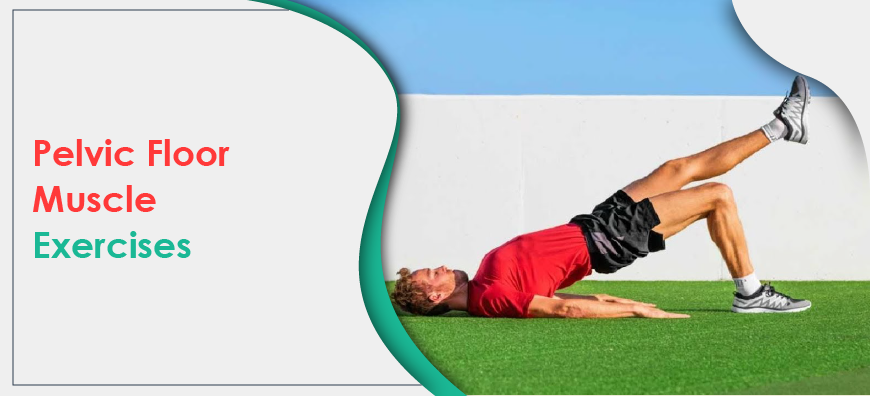
The pelvic floor muscles and tissues are found to be attached to the bones at the bottom of the pelvis. the pelvic organs include the urethra, bladder, intestines, and rectum, and in cases of females, the pelvic floor also includes the uterus, cervix, and vagina.
Why do you Need Pelvic Floor Muscle Training Exercises?
Any damage or weakening of pelvic floor muscles or tissues directly impacts a person in multiple ways and creates the following issues:
- Urinary Leakage or Urinary Incontinence,
- Improper Pelvic Pressure,
- Lower Back Pain,
- Pelvic Pressure or Fullness,
- The Frequent Urge to Urinate,
- Painful Urination,
- Constipation,
- Difficulties With Bowel Movements,
- Bowel Leakage,
- Pain With Sexual Intercourse,
- Pain In The Pelvic Region or Genitals,
- Pelvic Muscle Spasms.
Further, there is a connection between male sexual function and pelvic floor function. To be very specific, pelvic floor physical therapy potentially improves erectile dysfunction and ejaculation problems.
Top 5 Exercises to strengthen your Pelvic Floor
There are some simple exercises that can help you to activate the pelvic floor anytime, anywhere, even at home. But it’s also beneficial to incorporate specific exercises that strengthen and target the pelvic floor muscles. These five exercises can be broadly categorized into three hypotonic pelvic floor muscle exercises and two hypertonic pelvic floor muscles.
(a) Hypotonic Pelvic Floor Muscle Exercises
1. Quick flick Kegels

(Source)
The quick flick Kegel requires quick contractions of your pelvic floor to help activate the muscles faster and stronger to stop leaks upon sneezing or coughing.
- At the very start, lie on the floor with your knees bent and feet flat on the floor. (As you go easy with this exercise, try sitting or standing while performing it.)
- Find your pelvic floor muscles.
- Exhale, pull your navel to your spine, and quickly contract and release your pelvic floor muscles. Aim to contract for 1 second before releasing.
- Maintain steady breathing throughout.
- Repeat the quick flick 10 times, then rest for 10 seconds. Do 2–3 sets.
2. Heel slides

(Source)
Heel slides encourage pelvic floor contractions while targeting the deep abdominal muscles.
- Start with lying on the floor with your knees bent and pelvis in a neutral position.
- Inhale and then exhale through the mouth.
- Draw your pelvic floor up, lock in your core, and slide your right heel away from you. Only go as far as you can without losing your connection to your deep core.
- Find the bottom position, then inhale and bring your leg back to starting position.
- Repeat.
- Do 10 slides on each side before changing to the other leg.
3. Marches or toe taps

(Source)
Like heel slides, the marching exercise increases core stability and encourages pelvic floor contractions.
- Start with lying on the floor with your knees bent and pelvis in a neutral position.
- Inhale into your rib cage, then exhale through your mouth, letting your ribs naturally compress.
- Draw your pelvic floor up and lock in your core.
- Slowly lift one leg up to a tabletop position.
- Slowly lower this leg to the starting position.
- Repeat the movement by alternating legs. You should not feel any pain in your lower back. It’s important that your deep core stays engaged throughout the entire exercise.
- Alternate legs for 12 to 20 times.
(b) Hypertonic Pelvic Floor Muscle Exercises
Hypertonic exercises may provide some relaxation and lengthening for someone who has a short or tight pelvic floor; lengthening is just as important as strengthening.
4. Happy Baby Pose

(Source)
The Happy Baby Pose is a great addition to a pelvic floor routine when stretching and releasing are the goal.
- Start with lying on the floor with your knees bent.
- Bring your knees toward your belly at a 90-degree angle, with the soles of your feet facing up.
- Hold the outside or inside of your feet.
- Open your knees until they’re slightly wider than your torso.
- Bring your feet up toward your armpits, in a way that your ankles are over your knees.
- Flex your heels and push your feet into your hands. You can stay in this position for several breaths or gently rock from side to side.
5. Diaphragmatic breathing

(Source)
Diaphragmatic breathing encourages the functional relationship between the diaphragm and the pelvic floor. It’s also an excellent exercise for reducing stress.
- Start with lying flat on the floor on a yoga or exercise mat. You can also perform the exercise in a seated position.
- Do a few seconds of progressive relaxation. Focus on releasing the tension in your body.
- Once relaxed, put one hand on your stomach and the other on your chest.
- Inhale through your nose to expand your stomach. Remember, your chest should stay relatively still.
- Breathe in for 2 to 3 seconds and exhale slowly.
- Repeat several times while keeping one hand on the chest and one on the stomach.


